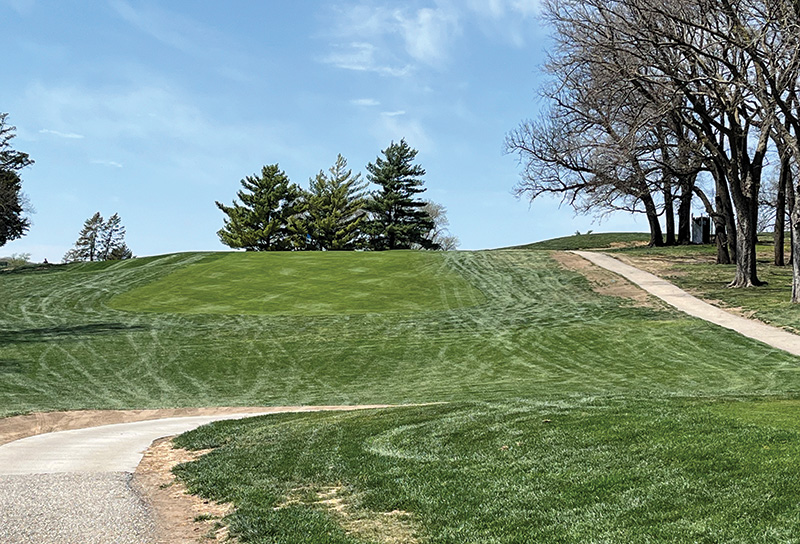
From the golfer’s perspective, a well-placed tree is helpful to gauge distance when hitting an approach shot. Photos by John C. Fech
How can something be the best and worst at the same time? If it’s a tree or shrub on a golf course and in a good or bad location, it’s easy. Even though many members or regular golfers may look at a plant and say to themselves something like, “The more plants the better,” poorly placed trees and shrubs can quickly become unhealthy plants.
There are lots of classic good and bad locations, as well as those unique cases that a particular course has. Shining a little light on them helps to have more of the positive ones and fewer of the negatives.
The common tendency to regard trees and shrubs first and foremost as an aesthetic feature is strong, but there’s much more to it than just good looks.
Yes, trees add color, texture, verticality, depth and appeal in all seasons, but there’s also a strong functional dimension to tree placement. Perhaps the best way to consider the functionality of a golf course ornamental is to view it as a “therefore” subject, in which you ask yourself, “What is it there for?”
Golf course architects routinely cite two to three reasons why a tree is placed in a certain location, at least one of which is how it will function. The overall goal is to solve a problem, not create one.
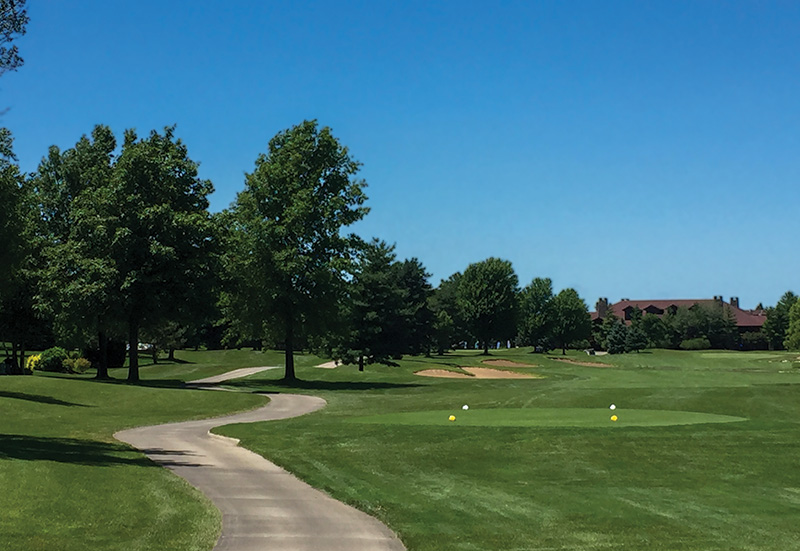
Safety can be enhanced via good tree placement.
Classic purposes and locations
Many groups of trees and shrubs are purposely utilized, including backdrops for greens, dogleg identification, screening for undesirable views and noise reduction, protection and liability/safety separation, obstacle/increase difficulty elements, shade for clubhouses/refreshment stands, framing, accenting/visual appeal, habitat trees and signature features.
These are the important functional benefits that woody plants provide. Taking a close review of these considerations will result in an enhanced capacity to manage the trees and shrubs on the golf course properly and a significant reduction in outlays of resources.
As an active process, it’s integral to evaluate and identify properly and poorly placed trees by discussing with team members in an exercise that involves asking the tough questions of, “Where should they be?” and, “What could be a problem here?”
Particularly helpful in this effort is the input from employees who have significant work experience at other golf courses. Their comments and insights often provide a valuable perspective when considering the purposes of various well and poorly placed specimens. On the other hand, just because it was done there doesn’t necessarily mean it works well here; each course is unique, even though the categories are the same.
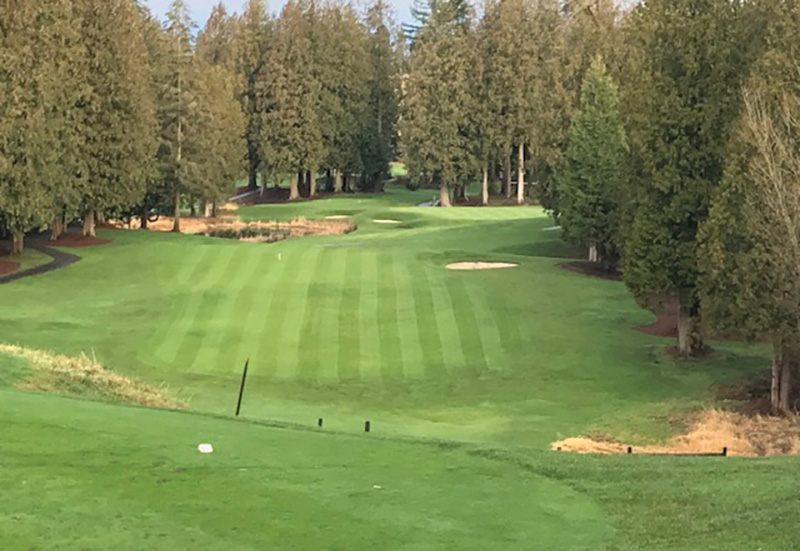
A backdrop of trees can help golfers with perspective. Photo by Peter Szarka
Good or bad or both?
Though each group of plant purposes can be described in several ways, the following are some functions that trees and shrubs can provide. As each is reviewed, it’s important to consider the obvious benefits but also the possible unintended problems that can be created or just develop on their own.
Backdrops for greens, visualization and depth perception
Wide-open greens without depth perception often make it difficult for golfers to gauge distance and the lay of the land when they hit an approach shot from the fairway to the green. A few well-placed trees behind the green can help provide a distance perspective for them. On the other hand, too many trees can greatly reduce airflow and sunlight, create disease-development conditions and limit photosynthesis, producing weak turf plants. If possible, it’s best to locate trees on the east side of a green, as afternoon sun provides more valuable sunlight intensity than morning sun. A healthy balance between the two is ideal. Of course, trees naturally increase in size, so this must be evaluated each year.
Protection for tees, greens and other targets, liability safety separation
Errant golf shots can be problematic for neighboring properties, particularly those of residential homeowners. Some of the liability can be reduced by judicious tree placement. The eventual size of the tree needs to be taken into account when choosing species and deciding exactly where to plant them, as shade and air flow is a concern here as well.
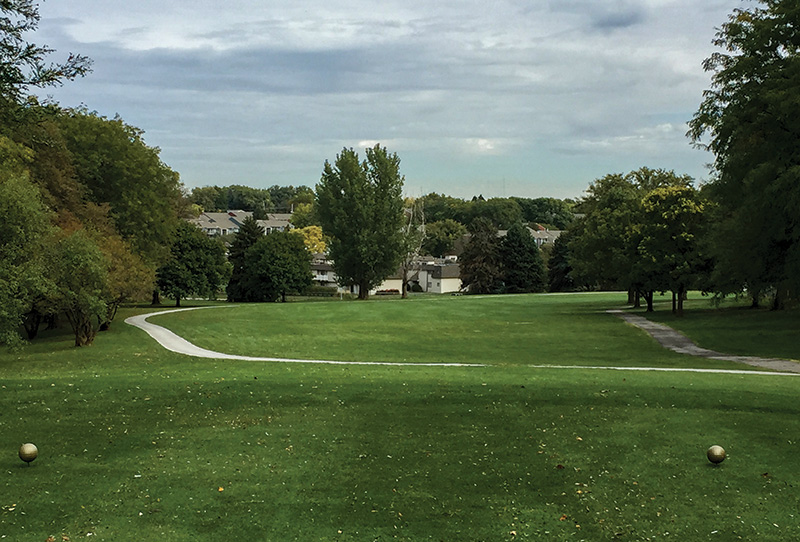
When a golf hole changes direction, trees can help make this known. Photos by John Fech
Dogleg Identification
When a golf hole changes direction, it can be less than obvious to a golfer, especially one who has never played the course. Well-placed trees and shrubs can provide helpful cues that the hole plays this way, not that way. Even small specimens can be valuable in this situation.
Signature features
Some courses have trees that they are known for and are rather famous indeed. Others have trees that they are simply proud of, either for the perfect placement or its great condition. Well-adapted but underutilized species for the area often fall into this category as well.
Welcomes/entrances, naming association.
The first impression that the space around a clubhouse or an entrance to a golf course makes is often the one that sticks with a person for a long time, either good or bad. Well-chosen, -placed and -maintained specimens help to make sure that impression is a good one. Shrubs, groundcovers, annuals and perennial flowers often enhance this positive association.
Obstacle/increase difficulty elements
Golf course architects often place certain elements on a hole to present obstacles or increase difficulty for the golfer. Trees used in this way should be monitored frequently to ensure that the original intent remains in place.
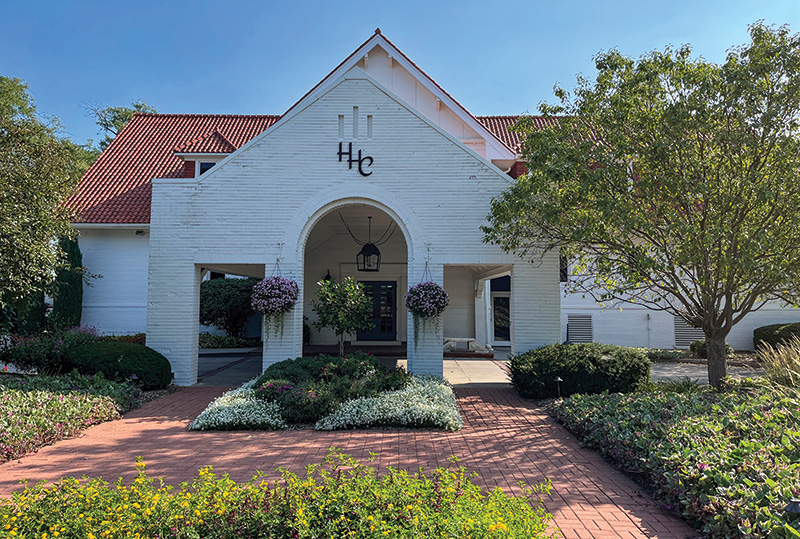
Settings such as this make a great first impression.
Shade for clubhouses/refreshment stands/patio dining
Certain spaces on the golf course are more enjoyable to be in if a little shade is cast upon them. These include clubhouse patios, refreshment stands and other gathering places. However, considering the frequency of human occupation in these locations, it’s imperative that these trees be in excellent condition with no defects.
Framing
To highlight certain areas or features such as a view to the clubhouse, a memorial, a piece of sculpture or a green, trees can be used in a framing manner, much like a picture frame. This usually involves placing trees on two sides or in some cases to create an overhead canopy more or less surrounding the object or view. These plants should be inspected regularly for condition issues as well.
Narrow strips
Generally, trees and shrubs don’t perform well in narrow spaces; however, the plants may be needed for screening or backdrops. When using woody plants in narrow planting locations, it’s best to limit the choices to species that will have small-to-moderate-sized root systems to avoid entanglement and eventual demise.
Filling in gaps in screening and understory
In many cases, when a tree or shrub dies, a gap is created. Other gaps exist when plants are needed underneath other plants to add depth and height variation. It’s important to consider the eventual size of a “fill-in” tree as well as whether it is shade adapted, as most will grow in half-day or filtered shade.

Obstacle plants should be reevaluated periodically to determine if the intent is currently being provided.
Habitat trees
In some situations, perhaps there isn’t a need to replace a dead tree with another one, as it could become a tree that provides a home for desirable raptors, pollinators and songbirds. The first consideration for these is the safety of the golfers and the proximity to valuable property, such as maintenance sheds and pump houses.
Accenting/visual appeal
Finally, beautification should be on the table. After all, no one wants to look at an ugly golf course. As trees and shrubs are chosen for aesthetic appeal, it’s crucial to keep in mind that form follows function. In other words, the plant has to meet a need first and look pretty second.

Shade is a double-edged sword on a golf course.
Things change — sometimes removal is best
If there is one thing that is constant, it’s change. It’s important to keep the functional and visual benefits in mind when placing them. And even though they are small when installed, they grow every year and get bigger. It’s imperative that they don’t cast too much shade, get in the way of golf play and/or necessitate unnecessary maintenance. If and when they do, removal is a viable option.
As you ponder each of these purposes, consider that some trees will serve several functions and others just one or two. As you evaluate the status of other features, pests or problems on the course, it just makes sense to give a second thought to the purpose of the trees nearby. Whether it is done hole by hole or randomly, it creates valuable insights that can be used in many proactive ways, including avoiding the removal of trees that provide invaluable benefits and bolstering the defense of your retain-or-remove decisions to various golf course stakeholders.
Fortunately, you don’t need to go it alone. When contemplating the value of a particular plant or group of plants, reach out to a local International Society of Arboriculture Certified Arborist or horticulturist at a nearby land-grant university. These professionals have the experience, knowledge and the tools necessary to provide helpful recommendations and guidance when choosing and retaining trees and shrubs in various locations.
John C. Fech is a horticulturist and Extension educator with the University of Nebraska-Lincoln. He is a frequent and award-winning contributor to GCM.